Grid 1:
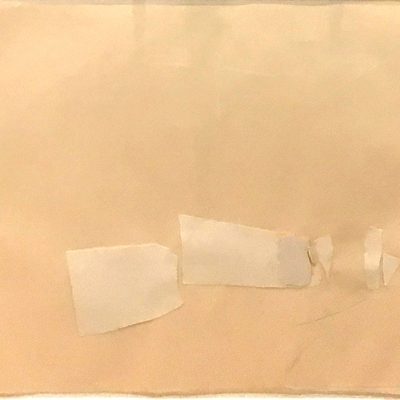
(Cream) Montmartre
Brett Whiteley
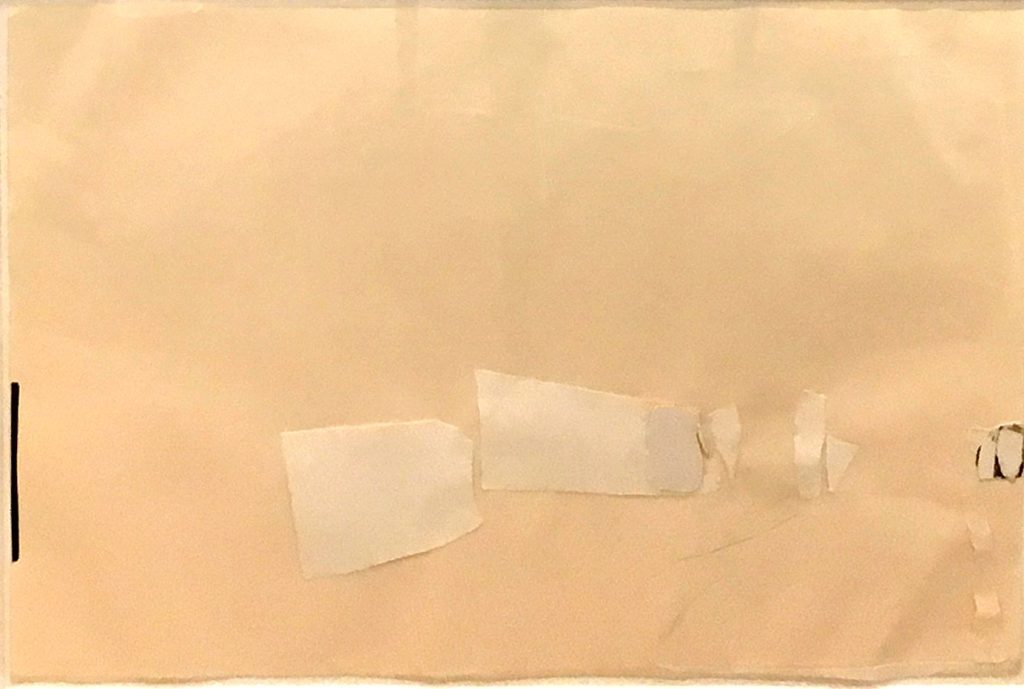
Provenance
Australian Galleries, Melbourne label attached verso (no.9451);
The collection of Arkie Whiteley;
The Estate of the late Christopher Kuhn, Canada
Essay
Brett Whiteley created this work in Paris in 1989. It was his second visit to the city and resulted in his celebrated Paris series of gouaches and drawings. Here is a quote from Whiteley relating to this period of his work;
“I first went to Paris at age 20, but was so obsessed with modernism and abstraction to paint it. Now with fresh eyes, I could respond figuratively and lyrically to the one ravishing subject – Paris and her cultural heroes. I love the stoniness and creaminess, that wonderful soiled magnolia feeling. Paris is so sensual, beautiful, flirtatious, mischievous, arrogant, orderly, civilised. They call Paris a whore because she seduces you on every corner, and every street I turned, I could see another picture.”
This work has a wonderful provenance having been in the collection of Whiteley’s daughter Arkie.
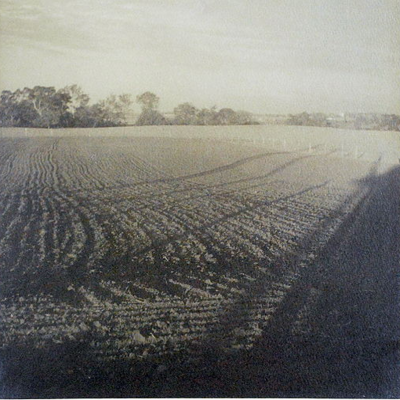
[Ploughed Field With Shadows]
Olive Cotton
![[Ploughed Field With Shadows]](https://justinmiller.art/wp-content/uploads/2021/03/Ploughed-Field-With-Shadows-.png)
[Ploughed Field With Shadows] 1940
vintage silver gelatin photograph
signed and dated in pencil in lower margin
29.6 x 29.5cm
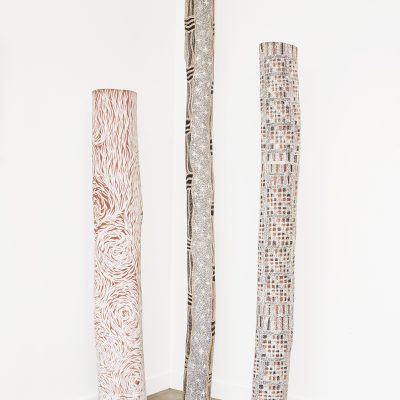
A collection of fine ceremonial poles
Various Artists
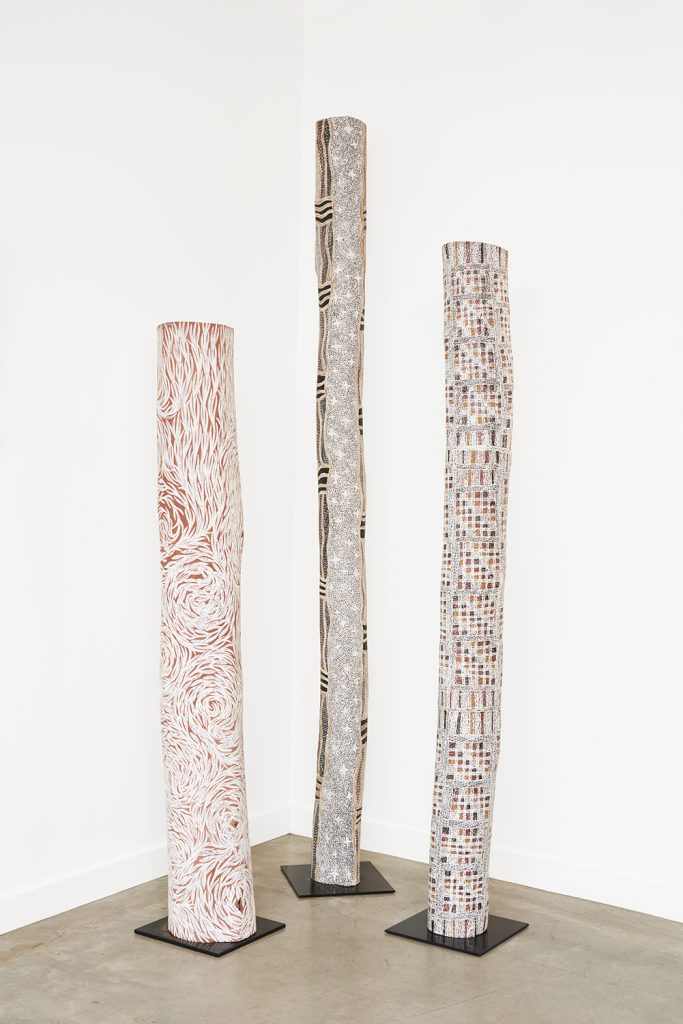
A collection of fine ceremonial poles
earth pigments on hollow stringybark log
168 x 24cm (left), 235 x 15cm (centre), 196 x 15cm (right)
Provenance
DJIRRIRRA WUNUNGMURRA (b. 1968)
Yukuwa 729-19
(left)
CAROLINE DATJULUMA GUYULA (b. 1973)
Milŋiyawuy 7582-21
(centre)
JOCELYN YIMULA MUNUŊGURR (b. 1974)
Djapu 7759-21
(right)
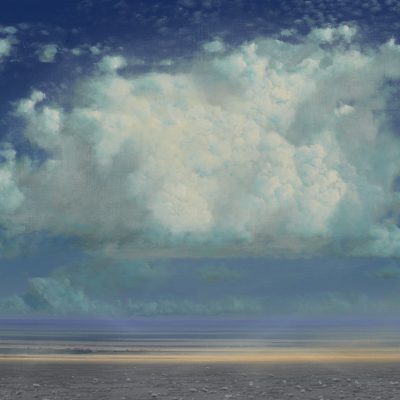
A Distance Away (afternoon cloud)
Tim Storrier
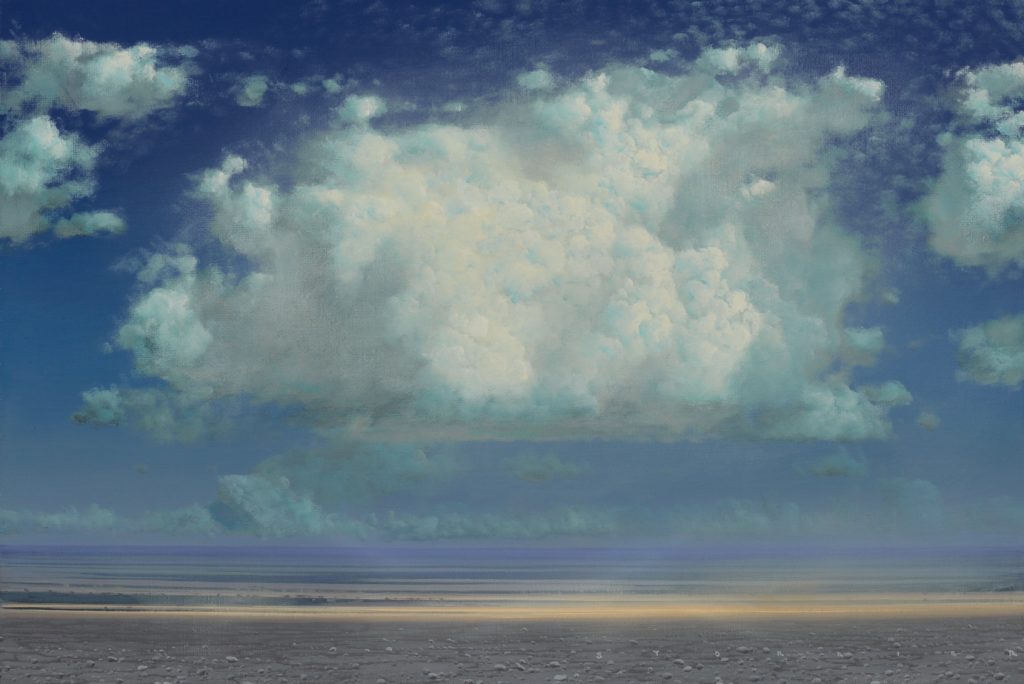
A Distance Away (afternoon cloud) 2022
acrylic on canvas
signed lower right
41 x 61cm
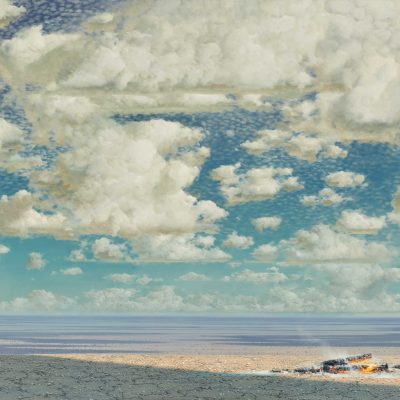
A Distance Away (The Shadowed Plain)
Tim Storrier

Provenance
Private collection, Sydney
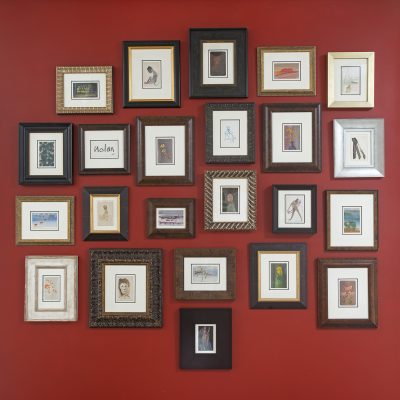
A fine group of 23 Personal Cards dated through the 1950s and 1960s
Sidney Nolan
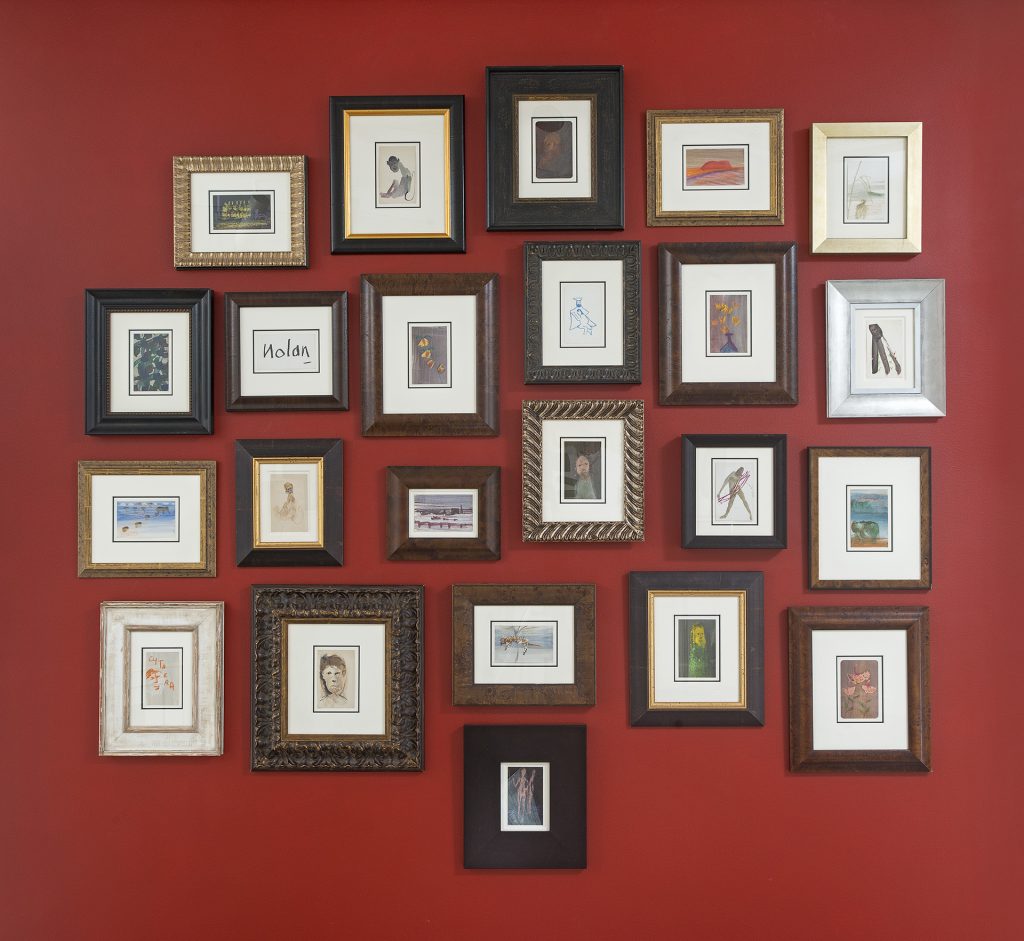
A fine group of 23 Personal Cards dated through the 1950s and 1960s
mixed media on postcard paper
8.9 x 14cm (various orientations)
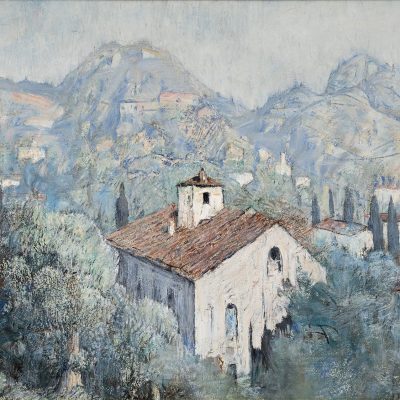
A Memory of Majorca
Lloyd Rees
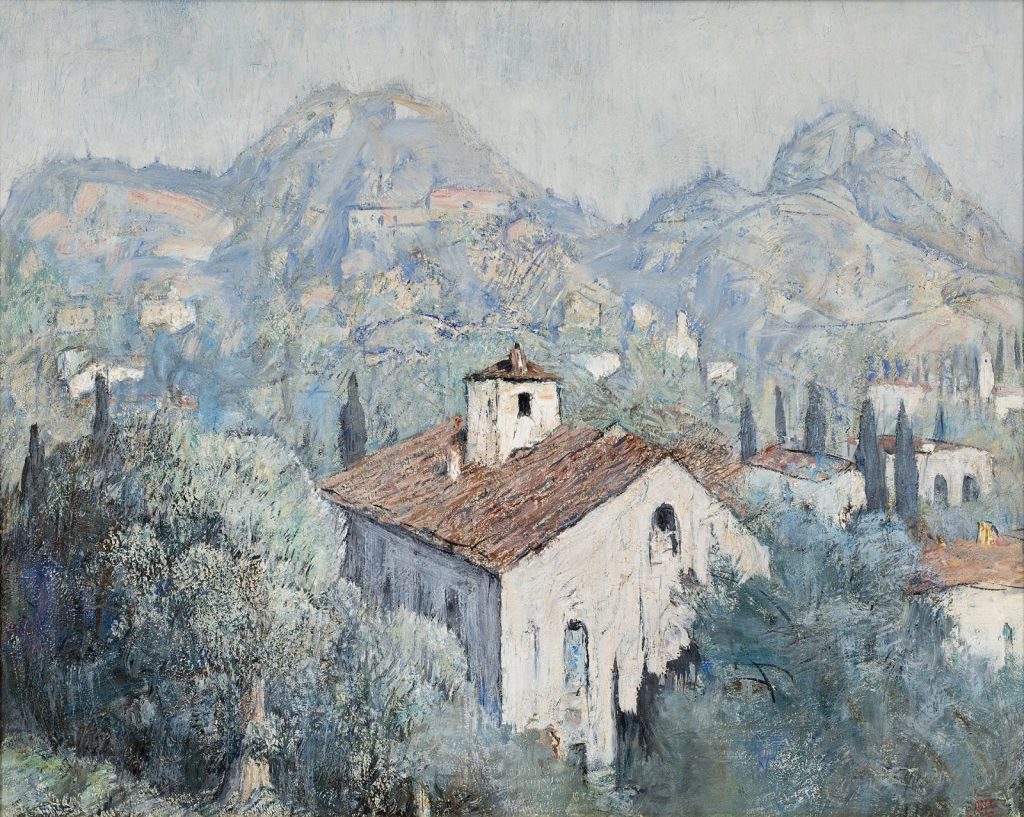
Provenance
Von Bertouch Galleries, Newcastle;
Private collection, Sydney
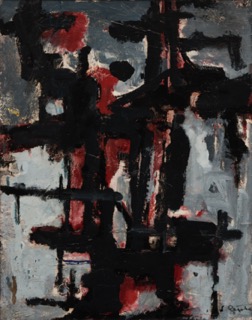
Abstract
Stanislav Rapotec

Abstract 1958
oil on board
signed lower right corner ‘Rapotec’
70 x 55cm
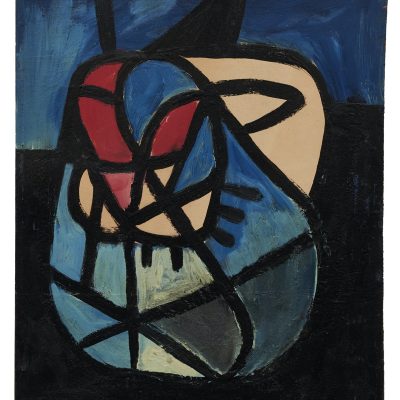
Abstract [Tent and Eyes]
Sidney Nolan
![Abstract [Tent and Eyes]](https://justinmiller.art/wp-content/uploads/2022/09/20220915-013-copy-816x1024.jpg)
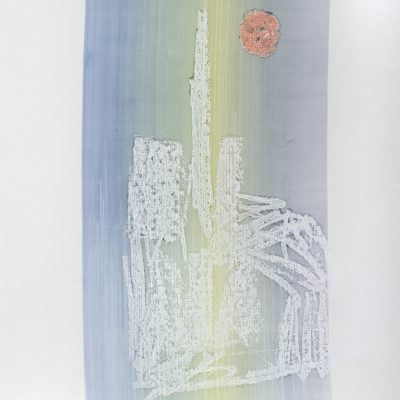
Abstract and Sun/Ball
Sidney Nolan
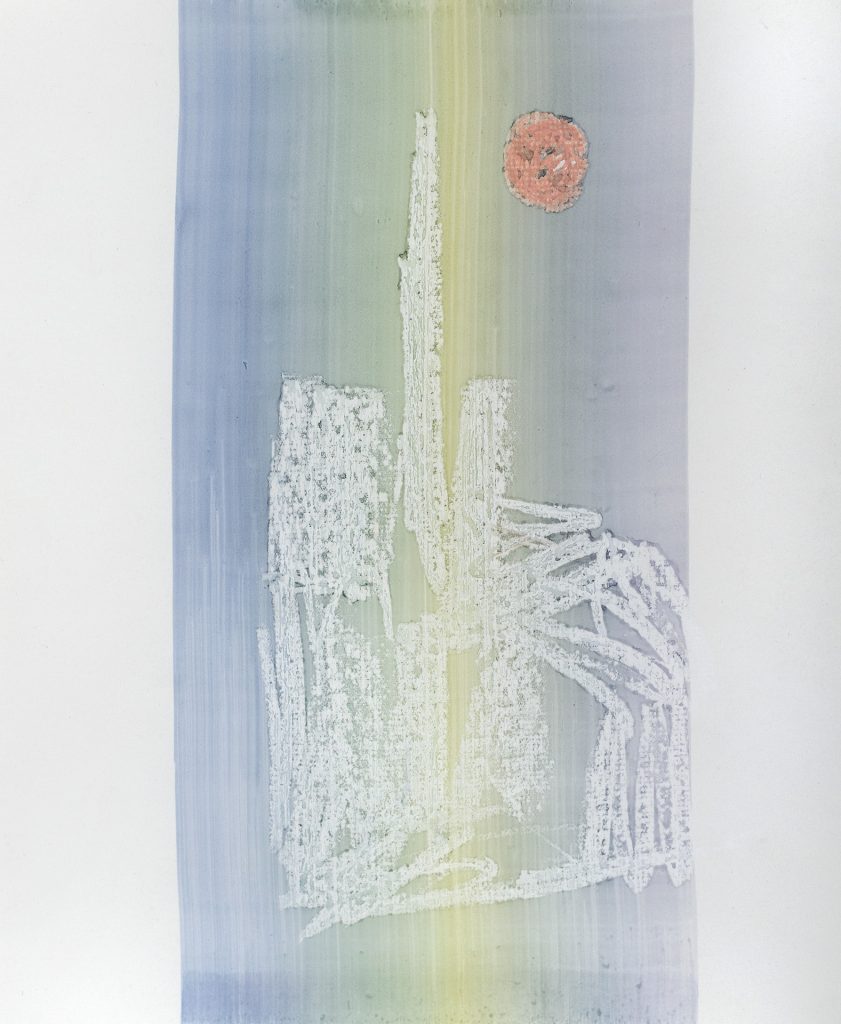
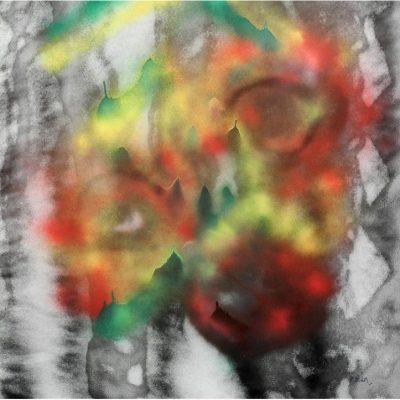
Abstract Spray
Sidney Nolan
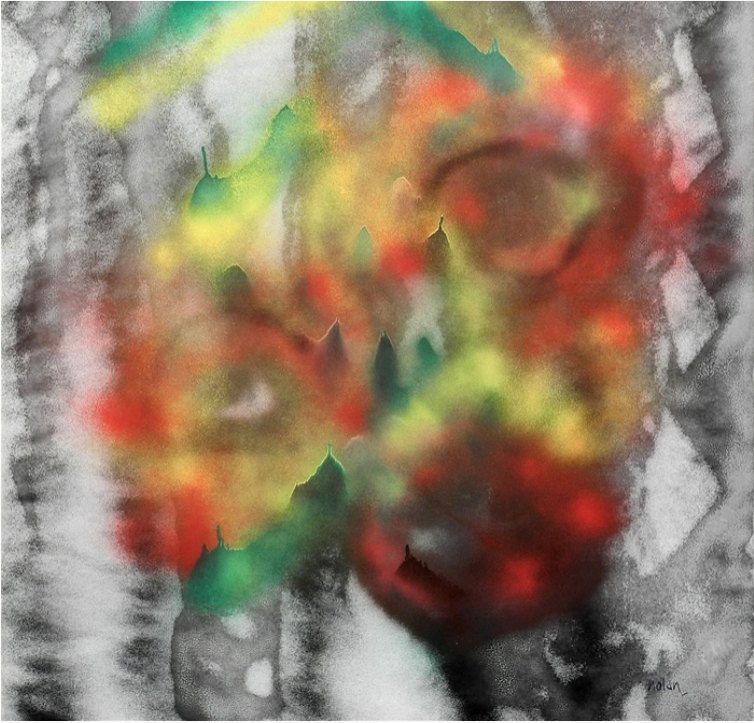
Provenance
Lord McAlpine, UK
Corporate collection, Perth
Savill Galleries, Sydney
Private collection, Sydney
Menzies, 25 March 2010, lot 163
Private collection, Sydney
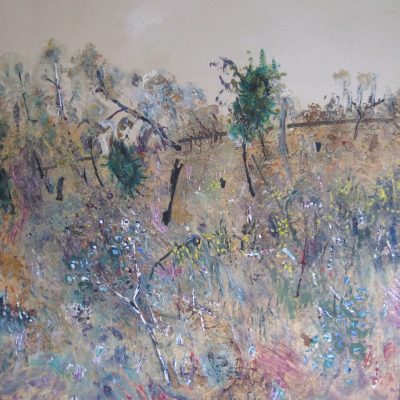
Acacia Garden
Fred Williams
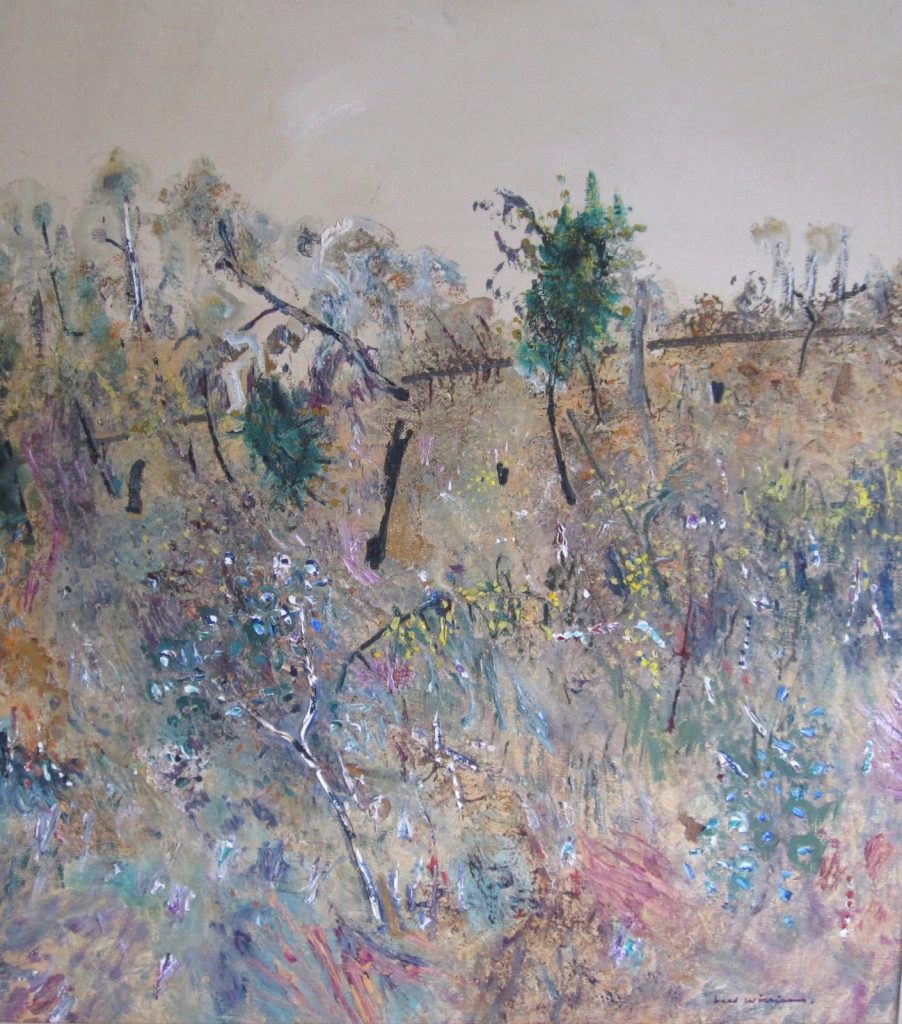
Provenance
Rex Irwin Art Dealer, from the
Estate of the late Fred Williams
Private collection, Sydney
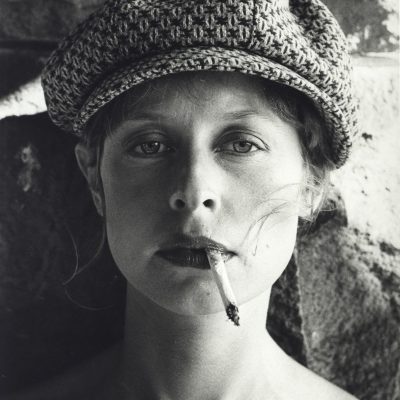
Actor Judy Morris Smoking on the set of “In Search Of Anna”
Carol Jerrems
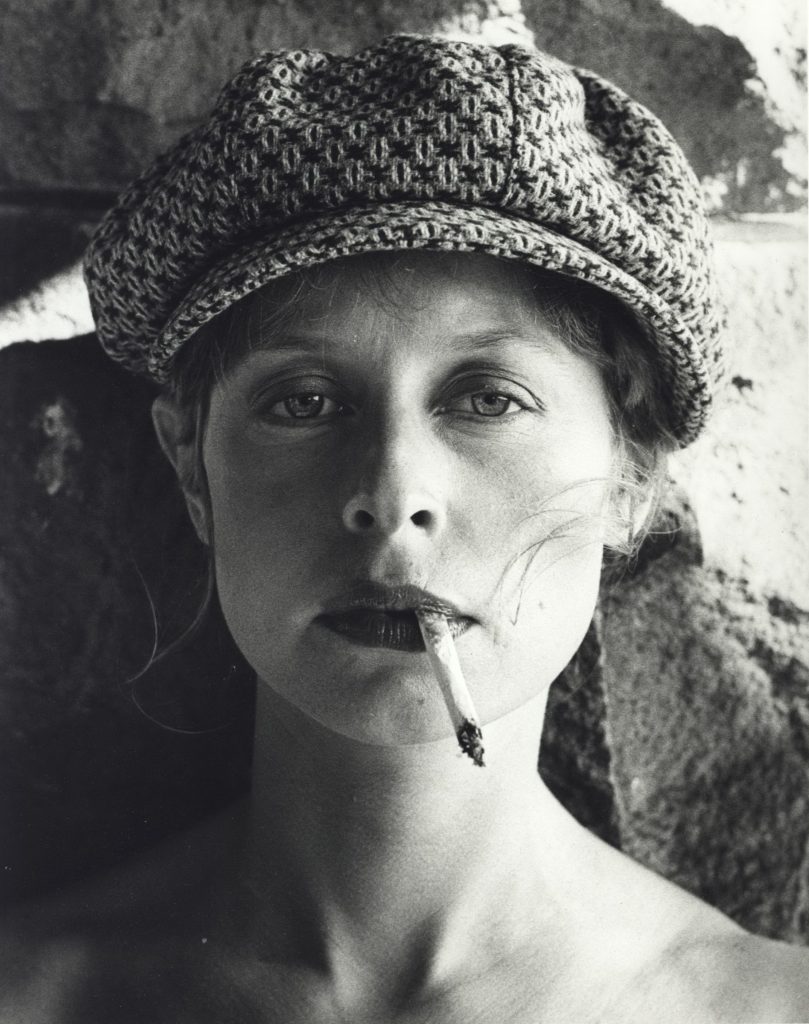
Actor Judy Morris Smoking on the set of “In Search Of Anna”
vintage silver gelatin photograph
‘Storm Productions’ stamp verso
23.8 x 18.8cm
Essay
Carol Jerrems’ Actor Judy Morris Smoking on the set of “In Search Of Anna” is an extraordinarily rare and incredibly powerful photograph. Known for elegantly bringing together performed, documentary and autobiographical image-making, Jerrems was a woman both for and of her times.
Her seminal body of work documents the revolutionary spirit and cultures of Indigenous Australians, disaffected youth, and the emergent feminist movement of Melbourne in the 1970s. Jerrems’ photographic output has been compared to that of internationally known Americans Larry Clark – of a slightly older generation – and Nan Goldin, as well as fellow Australian William Yang.
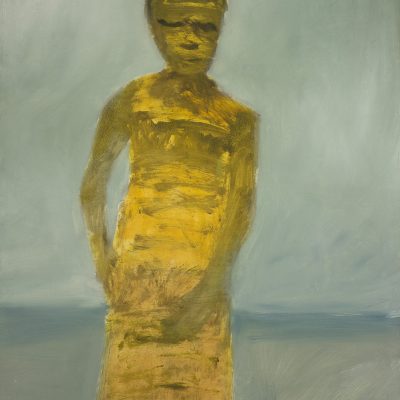
African Woman
Sidney Nolan

African Woman
oil on board
initialled lower left: 'N'; initialled and dated verso: '30/12/62 / N'
122 x 91.5cm
Provenance
Sir Sidney Nolan, United Kingdom, until 1992;
Lady Nolan, United Kingdom, until 2016;
The Estate of Lady Nolan, United Kingdom;
Private collection, Sydney

All the Jila
Daniel Walbidi
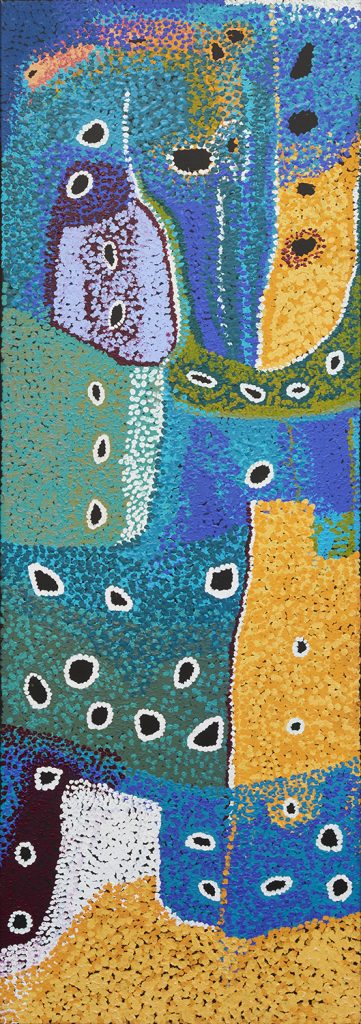
All the Jila
synthetic polymer paint on linen
bears inscription verso: artist's name, date, medium, size and Short Street Gallery cat. 10999
179 x 60cm
2006
Provenance
Short Street Gallery, Broome;
Private collection, New South Wales;
Deutscher and Hackett; Selected Indigenous Art Including Works from the
Collection of Grant Smith, August 31, 2021, lot 1
Essay
This painting is accompanied by a certificate of authenticity from Short Street
Gallery, Broome that states:
‘This shows Winpa country, all the jila (waterholes) Winpa left for the people when he died and plenty of mayi (bush tucker).’
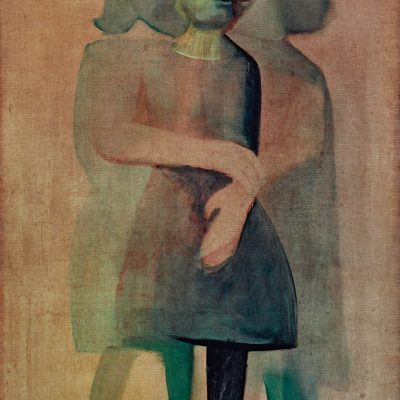
An Illusion of Children
Charles Blackman
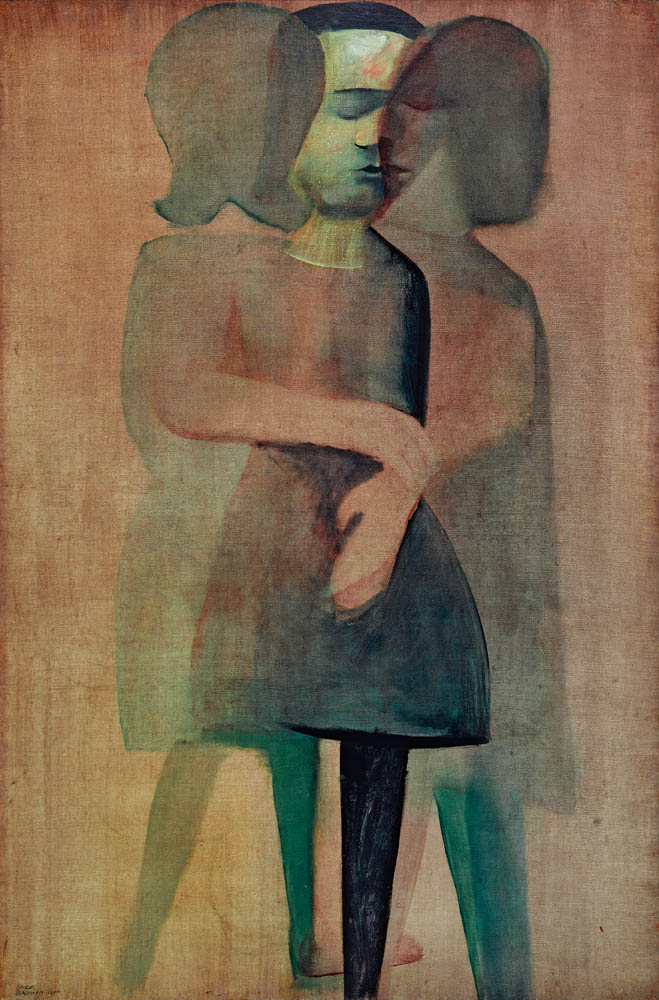
An Illusion of Children 1964
oil on canvas
signed and dated lower left
137.5 x 91.5cm
Essay
Related Work:
Illusion of Children, c. 1966, oil on canvas, 152.0 x 195.0cm, private collection
Illusion of Children, c. 1965, oil on composition board, 159.0 x 124.0cm, private collection
‘Charles Blackman has been one of Australia’s most celebrated artists for over seventy years, establishing his reputation with his iconic Schoolgirls series (1952-1955) and then Alice in Wonderland series (1956-1957). In August 1959, he participated in Bernard Smith’s (1916-2011) landmark exhibition Antipodeans, the catalogue for which included ‘The Antipodean Manifesto’. This significant essay protested the current trend for Abstract Expressionism and championed figurative art, which Blackman signed alongside Arthur Boyd (1920-1999), David Boyd (1924-2011), John Brack (1920-1999), Robert Dickerson (1924-2015), John Perceval (1923-2000) and Clifton Pugh (1924-1990). The following year, Blackman won the recently-established Helena Rubinstein Travelling Scholarship, and, following the path of many Australian artists, moved to London.
Between 1961 and 1966, Blackman and his family were a vital part of the Australian expatriate community. ‘My contemporaries in London were more or less the same that they were in Australia, except that I probably saw them more often,’ he explained.1 Blackman’s social circle included Arthur Boyd, Brett Whiteley (1939-1992) and Sidney Nolan (1917-1992), as well as other creative men like Al Alvarez and Barry Humphries. His wife Barbara remarked ‘our lives seemed to flow close together, to intertwine and follow common currents. There seemed to be endless parties, most of them at our house’.2
Blackman painted An Illusion of Children in 1964, the year they moved from Highgate, where their home was the hub of the Australian creative community, to Hanover Gate Mansions in Marylebone, to an apartment overlooking Regent’s Park. Barbara pointed out they were leaving behind their apartment ‘opposite the graveyard, where our favourite poet, Coleridge, was buried’.3 The couple shared a love of literature, which the artist read aloud every day to his wife, who was blind. This was a constant source of inspiration to Blackman, with the Symbolist work of André Gide (1861-1959) and Arthur Rimbaud (1854-1891) particularly influential in his early work –there are echoes of this in An Illusion of Children.
In An Illusion of Children, a young girl stands with her eyes closed: what is she daydreaming about? Two ghost-like silhouettes accompany her, uncanny shadows that imply the many layers to her identity, her hidden inner life. Blackman returned frequently throughout his career to this study of shadows, of figures fading and multiplying, echoes of themselves. Such silhouettes feature in several of Blackman’s works from this time, including The Blue Room and Window Shadow, both from 1965. He also painted many images of children during this period, when he had three small children of his own. Barbara commented that ‘Often he picks up the children from school and walks home with them, waits while they have a swing, that sort of thing’, an activity that manifested in his works set at playgrounds including Playground, Children Playing and Children at Play of 1964.4
In a review of a 1967 solo exhibition at Albert Hall, Canberra, Donald Brook cogently described how: ‘Looking at Blackmans is like looking at another’s carefully edited dreams…They are haunting pictures, I think, because, like ghosts, they assume the shape and meaning that the viewer projects upon them.’5 It is this fluidity, this undercurrent of emotion, which helped Blackman become one of Australia’s most renowned artists. He is represented in the National Gallery of Australia, all Australian state galleries and many regional collections, and in 1997, Blackman was appointed an Officer of the Order of the British Empire in recognition of his service to Australian culture.’
Footnotes
1. Pierse, S., ‘Australian artists in London: The early 1960s’, Australians in Britain: The Twentieth-Century Experience, Melbourne: Monash University ePress
2. Pierse, S., ‘Australian artists in London’
3. ‘Poets Write About Their Touching Story’, The Australian Women’s Weekly, 25 May 1966, p.15
4. ‘Poets Write About Their Touching Story’, The Australian Women’s Weekly, 25 May 1966, p.15
5. The Canberra Times, 23 November 1967, p.35
By Dr Kate Robertson, PhD University of Sydney
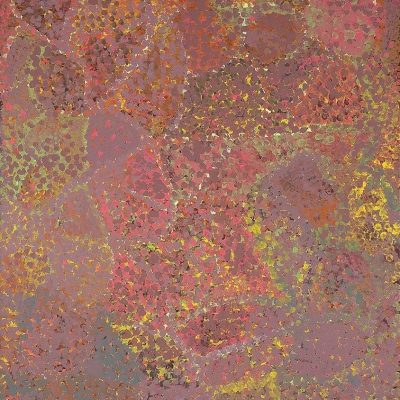
Anooralya
Emily Kame Kngwarreye
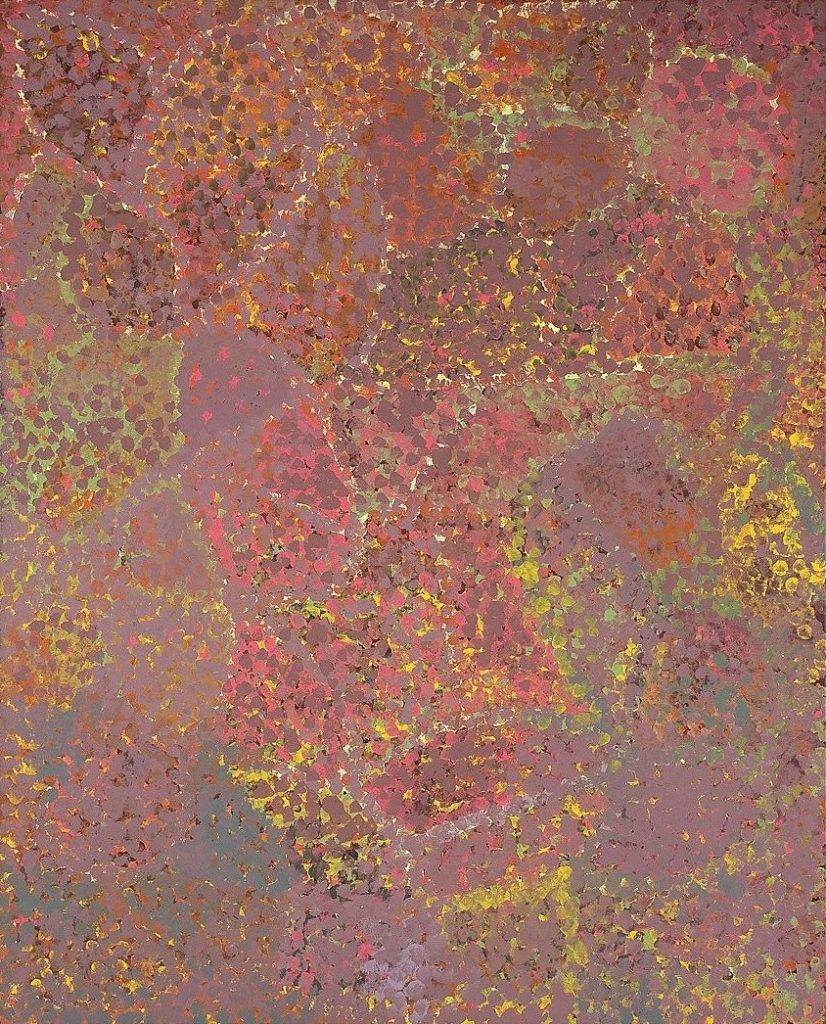
Provenance
Commissioned by Delmore Gallery, Alice Springs, Northern Territory;
William Mora Galleries, Melbourne;
Applied Chemicals Collection, Melbourne;
Deutscher & Hackett, Australian and International Fine Art, Sydney, 29/11/2007, Lot no. 30;
Private collection, Sydney
Exhibited
Of My Country: Emily Kame Kngwarreye, The Applied Chemicals Collection, Bendigo Art Gallery, 1 – 30 May 1999, and touring various venues throughout Victoria and New South Wales, June 1999 – April 2000
Essay
This painting bursts with joyous purples, yellows and pinks, so characteristic of Kngwarreye’s colourist paintings from the early 1990s. Stylistically the work retains the complex branching of underpainted lines indicative of the various levels of the yam, the tracks of the emu as it walks the country feeding on the yam, and the creator being. Kngwarreye is a highly celebrated artist and one of the most renowned Aboriginal female painters of the 20th century. Her contribution to Australia’s cultural heritage was recognised in 1992, the same year this work was painted, when she was awarded an Australian Artists Creative Fellowship.
Grid 2:

(Cream) Montmartre
Brett Whiteley

Provenance
Australian Galleries, Melbourne label attached verso (no.9451);
The collection of Arkie Whiteley;
The Estate of the late Christopher Kuhn, Canada
Essay
Brett Whiteley created this work in Paris in 1989. It was his second visit to the city and resulted in his celebrated Paris series of gouaches and drawings. Here is a quote from Whiteley relating to this period of his work;
“I first went to Paris at age 20, but was so obsessed with modernism and abstraction to paint it. Now with fresh eyes, I could respond figuratively and lyrically to the one ravishing subject – Paris and her cultural heroes. I love the stoniness and creaminess, that wonderful soiled magnolia feeling. Paris is so sensual, beautiful, flirtatious, mischievous, arrogant, orderly, civilised. They call Paris a whore because she seduces you on every corner, and every street I turned, I could see another picture.”
This work has a wonderful provenance having been in the collection of Whiteley’s daughter Arkie.

[Ploughed Field With Shadows]
Olive Cotton
![[Ploughed Field With Shadows]](https://justinmiller.art/wp-content/uploads/2021/03/Ploughed-Field-With-Shadows-.png)
[Ploughed Field With Shadows] 1940
vintage silver gelatin photograph
signed and dated in pencil in lower margin
29.6 x 29.5cm

A collection of fine ceremonial poles
Various Artists

A collection of fine ceremonial poles
earth pigments on hollow stringybark log
168 x 24cm (left), 235 x 15cm (centre), 196 x 15cm (right)
Provenance
DJIRRIRRA WUNUNGMURRA (b. 1968)
Yukuwa 729-19
(left)
CAROLINE DATJULUMA GUYULA (b. 1973)
Milŋiyawuy 7582-21
(centre)
JOCELYN YIMULA MUNUŊGURR (b. 1974)
Djapu 7759-21
(right)

A Distance Away (afternoon cloud)
Tim Storrier

A Distance Away (afternoon cloud) 2022
acrylic on canvas
signed lower right
41 x 61cm

A Distance Away (The Shadowed Plain)
Tim Storrier

Provenance
Private collection, Sydney

A fine group of 23 Personal Cards dated through the 1950s and 1960s
Sidney Nolan

A fine group of 23 Personal Cards dated through the 1950s and 1960s
mixed media on postcard paper
8.9 x 14cm (various orientations)

A Memory of Majorca
Lloyd Rees

Provenance
Von Bertouch Galleries, Newcastle;
Private collection, Sydney

Abstract
Stanislav Rapotec

Abstract 1958
oil on board
signed lower right corner ‘Rapotec’
70 x 55cm

Abstract [Tent and Eyes]
Sidney Nolan
![Abstract [Tent and Eyes]](https://justinmiller.art/wp-content/uploads/2022/09/20220915-013-copy-816x1024.jpg)

Abstract and Sun/Ball
Sidney Nolan


Abstract Spray
Sidney Nolan

Provenance
Lord McAlpine, UK
Corporate collection, Perth
Savill Galleries, Sydney
Private collection, Sydney
Menzies, 25 March 2010, lot 163
Private collection, Sydney

Acacia Garden
Fred Williams

Provenance
Rex Irwin Art Dealer, from the
Estate of the late Fred Williams
Private collection, Sydney

Actor Judy Morris Smoking on the set of “In Search Of Anna”
Carol Jerrems

Actor Judy Morris Smoking on the set of “In Search Of Anna”
vintage silver gelatin photograph
‘Storm Productions’ stamp verso
23.8 x 18.8cm
Essay
Carol Jerrems’ Actor Judy Morris Smoking on the set of “In Search Of Anna” is an extraordinarily rare and incredibly powerful photograph. Known for elegantly bringing together performed, documentary and autobiographical image-making, Jerrems was a woman both for and of her times.
Her seminal body of work documents the revolutionary spirit and cultures of Indigenous Australians, disaffected youth, and the emergent feminist movement of Melbourne in the 1970s. Jerrems’ photographic output has been compared to that of internationally known Americans Larry Clark – of a slightly older generation – and Nan Goldin, as well as fellow Australian William Yang.

African Woman
Sidney Nolan

African Woman
oil on board
initialled lower left: 'N'; initialled and dated verso: '30/12/62 / N'
122 x 91.5cm
Provenance
Sir Sidney Nolan, United Kingdom, until 1992;
Lady Nolan, United Kingdom, until 2016;
The Estate of Lady Nolan, United Kingdom;
Private collection, Sydney

All the Jila
Daniel Walbidi

All the Jila
synthetic polymer paint on linen
bears inscription verso: artist's name, date, medium, size and Short Street Gallery cat. 10999
179 x 60cm
2006
Provenance
Short Street Gallery, Broome;
Private collection, New South Wales;
Deutscher and Hackett; Selected Indigenous Art Including Works from the
Collection of Grant Smith, August 31, 2021, lot 1
Essay
This painting is accompanied by a certificate of authenticity from Short Street
Gallery, Broome that states:
‘This shows Winpa country, all the jila (waterholes) Winpa left for the people when he died and plenty of mayi (bush tucker).’

An Illusion of Children
Charles Blackman

An Illusion of Children 1964
oil on canvas
signed and dated lower left
137.5 x 91.5cm
Essay
Related Work:
Illusion of Children, c. 1966, oil on canvas, 152.0 x 195.0cm, private collection
Illusion of Children, c. 1965, oil on composition board, 159.0 x 124.0cm, private collection
‘Charles Blackman has been one of Australia’s most celebrated artists for over seventy years, establishing his reputation with his iconic Schoolgirls series (1952-1955) and then Alice in Wonderland series (1956-1957). In August 1959, he participated in Bernard Smith’s (1916-2011) landmark exhibition Antipodeans, the catalogue for which included ‘The Antipodean Manifesto’. This significant essay protested the current trend for Abstract Expressionism and championed figurative art, which Blackman signed alongside Arthur Boyd (1920-1999), David Boyd (1924-2011), John Brack (1920-1999), Robert Dickerson (1924-2015), John Perceval (1923-2000) and Clifton Pugh (1924-1990). The following year, Blackman won the recently-established Helena Rubinstein Travelling Scholarship, and, following the path of many Australian artists, moved to London.
Between 1961 and 1966, Blackman and his family were a vital part of the Australian expatriate community. ‘My contemporaries in London were more or less the same that they were in Australia, except that I probably saw them more often,’ he explained.1 Blackman’s social circle included Arthur Boyd, Brett Whiteley (1939-1992) and Sidney Nolan (1917-1992), as well as other creative men like Al Alvarez and Barry Humphries. His wife Barbara remarked ‘our lives seemed to flow close together, to intertwine and follow common currents. There seemed to be endless parties, most of them at our house’.2
Blackman painted An Illusion of Children in 1964, the year they moved from Highgate, where their home was the hub of the Australian creative community, to Hanover Gate Mansions in Marylebone, to an apartment overlooking Regent’s Park. Barbara pointed out they were leaving behind their apartment ‘opposite the graveyard, where our favourite poet, Coleridge, was buried’.3 The couple shared a love of literature, which the artist read aloud every day to his wife, who was blind. This was a constant source of inspiration to Blackman, with the Symbolist work of André Gide (1861-1959) and Arthur Rimbaud (1854-1891) particularly influential in his early work –there are echoes of this in An Illusion of Children.
In An Illusion of Children, a young girl stands with her eyes closed: what is she daydreaming about? Two ghost-like silhouettes accompany her, uncanny shadows that imply the many layers to her identity, her hidden inner life. Blackman returned frequently throughout his career to this study of shadows, of figures fading and multiplying, echoes of themselves. Such silhouettes feature in several of Blackman’s works from this time, including The Blue Room and Window Shadow, both from 1965. He also painted many images of children during this period, when he had three small children of his own. Barbara commented that ‘Often he picks up the children from school and walks home with them, waits while they have a swing, that sort of thing’, an activity that manifested in his works set at playgrounds including Playground, Children Playing and Children at Play of 1964.4
In a review of a 1967 solo exhibition at Albert Hall, Canberra, Donald Brook cogently described how: ‘Looking at Blackmans is like looking at another’s carefully edited dreams…They are haunting pictures, I think, because, like ghosts, they assume the shape and meaning that the viewer projects upon them.’5 It is this fluidity, this undercurrent of emotion, which helped Blackman become one of Australia’s most renowned artists. He is represented in the National Gallery of Australia, all Australian state galleries and many regional collections, and in 1997, Blackman was appointed an Officer of the Order of the British Empire in recognition of his service to Australian culture.’
Footnotes
1. Pierse, S., ‘Australian artists in London: The early 1960s’, Australians in Britain: The Twentieth-Century Experience, Melbourne: Monash University ePress
2. Pierse, S., ‘Australian artists in London’
3. ‘Poets Write About Their Touching Story’, The Australian Women’s Weekly, 25 May 1966, p.15
4. ‘Poets Write About Their Touching Story’, The Australian Women’s Weekly, 25 May 1966, p.15
5. The Canberra Times, 23 November 1967, p.35
By Dr Kate Robertson, PhD University of Sydney

Anooralya
Emily Kame Kngwarreye

Provenance
Commissioned by Delmore Gallery, Alice Springs, Northern Territory;
William Mora Galleries, Melbourne;
Applied Chemicals Collection, Melbourne;
Deutscher & Hackett, Australian and International Fine Art, Sydney, 29/11/2007, Lot no. 30;
Private collection, Sydney
Exhibited
Of My Country: Emily Kame Kngwarreye, The Applied Chemicals Collection, Bendigo Art Gallery, 1 – 30 May 1999, and touring various venues throughout Victoria and New South Wales, June 1999 – April 2000
Essay
This painting bursts with joyous purples, yellows and pinks, so characteristic of Kngwarreye’s colourist paintings from the early 1990s. Stylistically the work retains the complex branching of underpainted lines indicative of the various levels of the yam, the tracks of the emu as it walks the country feeding on the yam, and the creator being. Kngwarreye is a highly celebrated artist and one of the most renowned Aboriginal female painters of the 20th century. Her contribution to Australia’s cultural heritage was recognised in 1992, the same year this work was painted, when she was awarded an Australian Artists Creative Fellowship.
